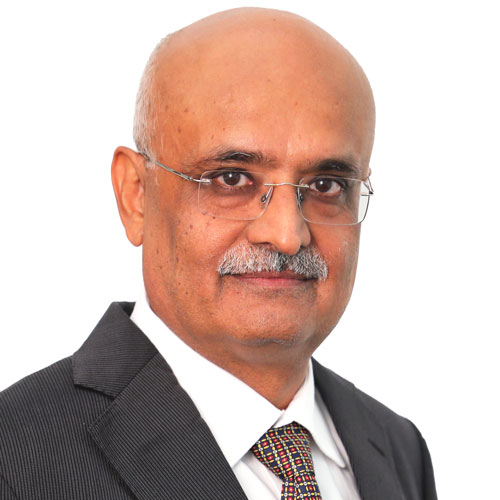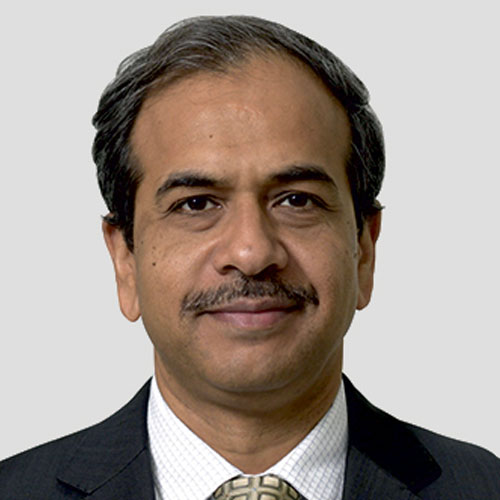Mr. Sanjay Chawla
Chief Investment Officer (CIO) - Equities, Baroda BNP Paribas
Mr. Chawla has over 33 years of experience in fund management, equity research, and management consultancy. He was designated as Chief Investment Officer with Baroda Asset Management India Limited. In his previous assignment, he has worked with Birla SunLife AMC as Sr. Fund Manager-Equity, managing various schemes with different strategies. Mr. Chawla has also worked as Head of Research with SBI Capital Markets and in various capacities in the equity research space in Motilal Oswal Securities, IDBI Capital Markets, SMIFS Securities, IIT Invest Trust, and Lloyds Securities.
Q1. The market has shown nearly continuous upward momentum after the June 4 crash. What factors are driving this optimism?
In our view, two things have contributed to the momentum in markets after the post-election crash. First was the realization that the coalition is strong with the major party accounting for over 75% of the seats. This was reinforced by the fact that the ruling party did not have to part with any major portfolios during the government formation. The second factor has been the flow into equities. Not only have the retail inflows maintained their momentum, even the FII flows have turned marginally positive post elections. This could be a result of the anticipation of rate cuts by the western central banks with the ECB already taking 1 cut and the likelihood of a Fed rate cut by Q4 of 2024 rising.
Q2. We have reached the halfway mark of 2024 – what are the prospects for the second half of the year? What are the important trigger points that investors should keep a close watch on?
Near term (the balance of 2024) we expect markets to track earnings. We are currently in the 1Q earnings season and with markets expected to deliver 14-15% growth we would expect markets to be broadly in that ballpark. We think investors should keep a close watch on the following factors:
-
The Union Budget scheduled for next week. This will be the first Budget for NDA 3.0 and as a result it becomes a kind of policy document to identify the focus areas for the government in this innings. The other would be any kind of tinkering on equity taxation which could involve redefining the tenure for long term, the rate for long term or the definition of “equity” to see whether it will continue to encompass arbitrage funds as a product.
-
The US presidential polls: Globally we have an important event towards the year end by way of elections in the US. Typically, the focus areas of Republicans and Democrats has tended to be different and any switch in government could result in different priorities.
-
China: Stimulus - The Chinese economy appears to be slowing faster than expected. With the government there contemplating an investment package, we will need to keep a close watch on crude/commodity markets. Relatedly China activities relating to Taiwan would be the other area to watch out for.
-
Any incremental regulations relating to F&O: The market regulator has been voicing concerns over the rising share of retail exposures in the F&O segments. Any tightening of regulations on this segment either by way of higher ticket/lot size, higher margins or pruning the F&O list could cause some hiccups.
Q3. Given the multitude of stocks trading at all-time highs, how challenging is it to identify stocks with reasonable valuations? Additionally, do you see a risk to the bullish trend due to the over-exuberance observed in SME stocks, many of which double in value on their listing day?
It is always interesting to talk about stocks hitting all-time highs as it brings about a mixed feeling of rejoice and fear. The former because of the returns on investment and the latter for the possibility of a bubble. We, however, always like to look from the lens of fundamentals. Consequently, we are not surprised or un-nerved with markets and stocks hitting all time as it comes in tandem with the underlying economy and corporate earnings doing the same.
While there are pockets where the up move has got exaggerated and stock prices may have run ahead of fundamentals, this can’t be said on a market wide basis. When we look at the investment canvas, we are still able to identify opportunities which look exciting to us and are available at valuations which are reasonable. Our message to investors is that “Do not be afraid of market making new highs as returns would get generated only when markets hit new high”.
As far as the SME stocks are a concern, these are typically out of our purview of investment consideration set. Having said that it is true that this segment has seen a lot of activity in the last couple of years. Investors should realise that this is a high-risk segment as most of the companies are in the fledgeling stage and mortality rates of companies at this stage can be very high. Nevertheless, this space will also see some of the companies emerge as future champions. Overall, we believe that this space is still evolving, and investors would also mature over time making it far more interesting space than it is presently.
Q4. While we maintain a positive outlook on India in the long term, what factors could potentially disrupt this bull market over the next year?
The Indian Economy has demonstrated resilience and maintained healthy macroeconomic fundamental despite global uncertainties. Macroeconomic stability, Robust domestic demand and Increasing per capita GDP indicates positive long-term outlook for Indian markets. However, in the near term there may be some disruption driven global as well as domestic factors. Any rise in commodity prices due to ongoing geopolitical tensions and delay in rate cuts by Fed could disrupt the bull market. On the domestic side, any kind of political instability arising from upcoming state elections can also impact the sentiments. Spatial dispersion on rainfall is key to ensure inflation in under check.
Q5. How are earnings likely to pan out in the next 6 months? A recent trend suggests that prices have run up ahead of earnings upgrades.
We are amid first quarter earnings seasons. Expectations are for Nifty earnings to increase by low single digits in 1Q. Sectors such as Automobiles, healthcare, financials, telecom and capital goods likely to contribute to growth, while Oil & Gas, cement, chemicals are likely to drag earnings growth. Over the next six months we do expect earnings growth to improve led by contributions from consumer staples and IT sector. India is one of the fastest growing economies and continued political stability is leading to positive investor sentiments. While markets have rallied, it largely reflects the earnings potential of companies as seen over the last four years, wherein Index appreciation is largely in line with earnings growth
Q6. What is your interpretation of the continued surge in PSU stocks following the elections? For investors considering a 5-year horizon, is it advisable to consider investing in PSU funds?
The government has been on a drive to improve efficiency of PSU and boost corporate governance practices. Post the elections a stable government with continuity in policy framework, has given confidence on PSU execution. The government’s emphasis on localization, increased capex, and ‘Make-in-India’ has improved revenue and earnings visibility for many PSU companies. The continued focus on PSU has yielded results and reflects in higher valuation multiples to many PSUs now compared to few years earlier. Also, PSUs have seen improved efficiencies and competitiveness leading to higher value creation. Market continues to expect that PSUs will continue to deliver on improved profitability, increased dividend flows leading to value creation in PSUs.




